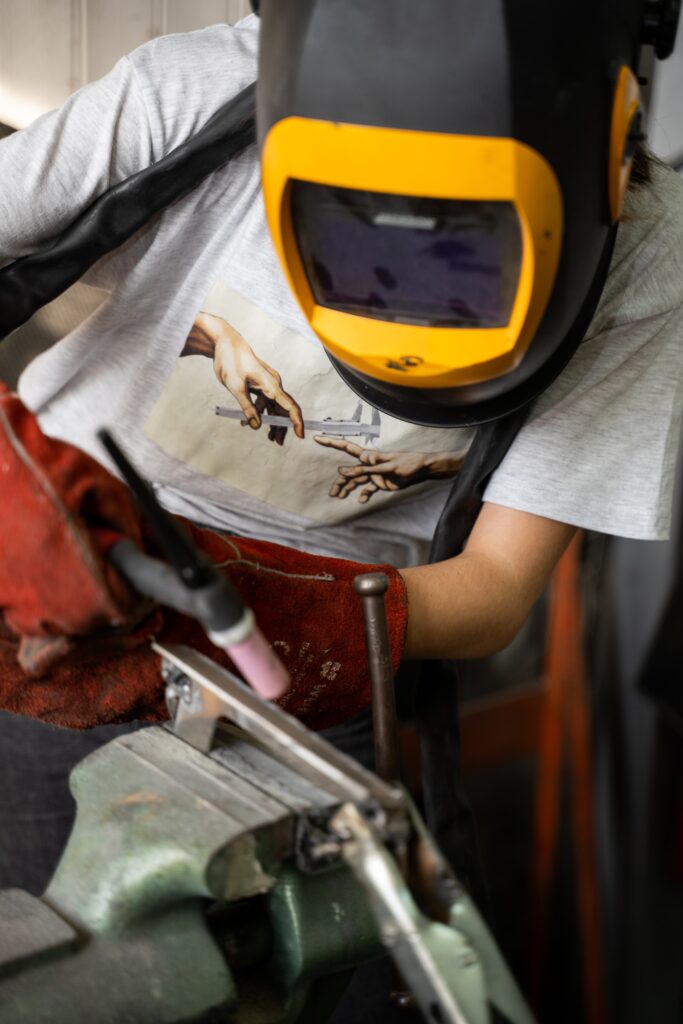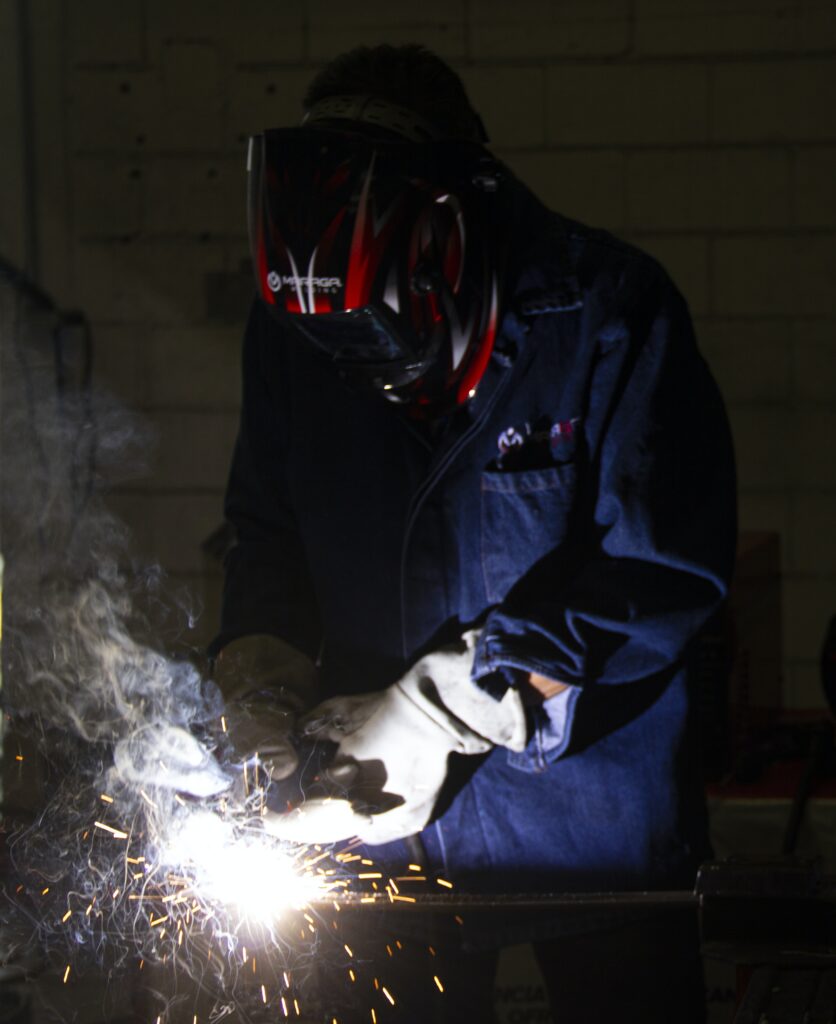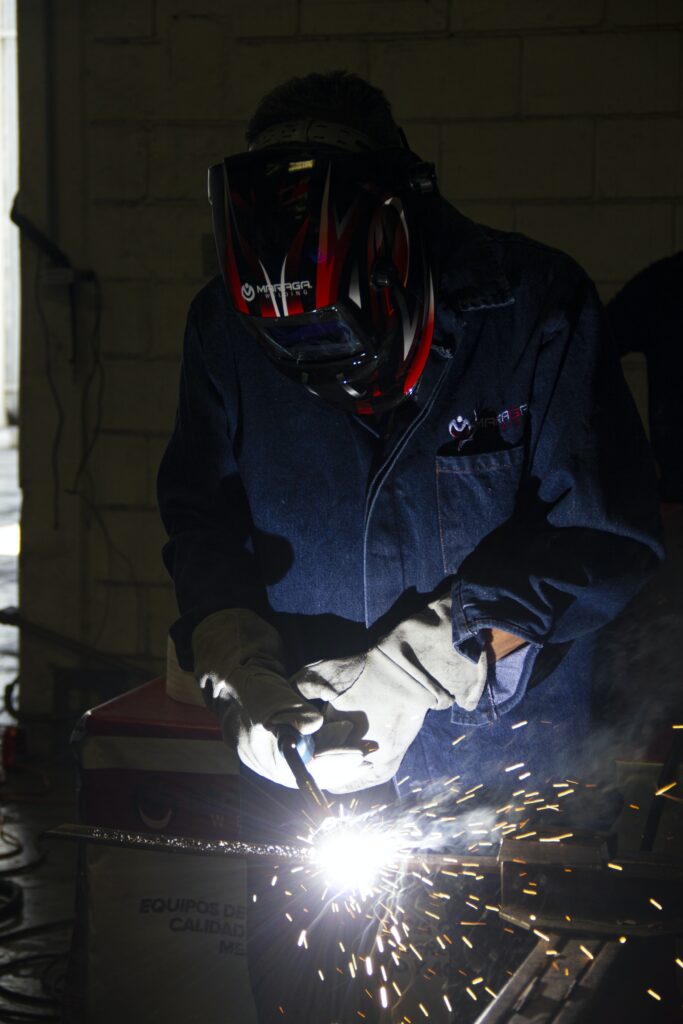In the article “how to get a welding apprenticeship“, you will be swept on an informative journey to learn how to effectively navigate the path to a productive and rewarding career in welding. By understanding various aspects such as eligibility criteria, application processes, utilized welding techniques, and the benefits and potential pitfalls of this field, you will find yourself well-equipped to make informed decisions with confidence. Be prepared to uncover significant information, practical tips, and successful strategies that could be your roadmap to gaining an apprenticeship in welding!

Understanding the Basics of Welding Apprenticeship
Isn't it exciting to create and join different metal parts into a cohesive whole? Welding makes it possible, and a welding apprenticeship lets you master this art. Defining a welding apprenticeship
A welding apprenticeship is a structured program that combines classroom-based learning with on-the-job training. It provides you with an opportunity to learn from seasoned professionals while gaining practical experience and earning a wage. Once you become an apprentice, you will work under the supervision of qualified welders who will guide you through various welding techniques and tasks. Getting into an apprenticeship program means embarking upon a journey to become a skilled craftsman. Benefits of a welding apprenticeship
An apprenticeship offers numerous benefits. Apart from hands-on training and theoretical knowledge, it equips you with the necessary skills needed to succeed in your career. As an apprentice, you earn a living wage while learning, which makes it a more practical option for those who can't afford a traditional education. Moreover, these programs usually involve relationships with potential employers, increasing your chances of securing employment after the completion of your apprenticeship. General duration of a welding apprenticeship
The duration of a welding apprenticeship typically differs depending on the program and skill level. Generally, they can last anywhere between one to five years. During this period, you'll undertake a mix of practical on-the-job training and theoretical learning. Eligibility Criteria for a Welding Apprenticeship
Understanding the eligibility criteria is crucial to navigate your career path successfully.
Age requirements
To commence a welding apprenticeship, you must meet the minimum age requirement. In most countries, this is generally around 16 to 18 years; however, it's best to check specific regulations in your area. Educational qualifications
Depending on the program and industry's demand, prospective apprentices might need to have a high school diploma or a similar qualification. Some programs may require specific math or science courses as part of their prerequisites. Physical health requirements
Welding can be physically demanding. So, it's important that you are in good health. Excellent hand-eye coordination, vision, and manual dexterity are crucial for this trade.
Researching Different Apprenticeships
Do your research before diving into any apprenticeship.
Types of welding apprenticeships
Various types of welding apprenticeships are available, including MIG (Metal Inert Gas), Stick, and TIG (Tungsten Inert Gas) welding, among others. These differ based on the techniques and materials used in welding. Industries offering welding apprenticeships
Multiple industries offer welding apprenticeships, such as construction, shipbuilding, automotive, and many others. It's best to choose an industry that aligns with your long-term career goals. Comparing different apprenticeships
When comparing different apprenticeships, consider factors such as the training provided, the qualifications you'll receive, prospective employers involved, and the apprenticeship duration. Gaining Relevant Skills and Experience
Get a head start on enhancing your skills.
Attending a technical school
Technical schools offer valuable training programs in welding techniques. These programs provide foundational knowledge and practical skills that can give you an edge during the apprenticeship selection process. Completing a pre-apprenticeship course
Pre-apprenticeship courses can prepare you for the rigorous demands of an apprenticeship program. They provide relevant training and skills that employers value. Learning and practicing fundamental welding techniques
Another important step to prepare for an apprenticeship is to learn and practice fundamental welding techniques. This can be done through personal practice, online tutorials, or taking part in amateur classes. 
Preparation for Welding Certification
A welding certification can open up more opportunities for you.
Acquiring necessary study materials
Good study materials are integral to your preparation for welding certification. They can be obtained from technical schools, online platforms, or through apprenticeship programs. Regular practice of welding techniques
Regular practice hones your skills and makes you more comfortable with various welding techniques, increasing your chances of acing the certification exam. Seeking advice from experienced welders
Experienced welders have invaluable insights to share, and can provide tips that can be helpful, both for your certification exam and your overall journey in the welding profession. Writing a Strong Resume and Cover Letter
Your resume and cover letter are key to landing an apprenticeship.
Highlighting relevant skills and experiences
Ensure your resume emphasizes your relevant skills and experiences. Showcase any welding courses you've attended, practical welding experience, technical skills, or voluntary work related to welding. Demonstrating eagerness to learn
Your cover letter should demonstrate your enthusiasm and eagerness to learn. Discuss why you're interested in welding, how you got started, and your aspiration to grow into a professional welder. Making the case for why you’re a good fit
Convincingly discuss why you are the right fit for the apprenticeship, outlining your potential contributions to the employing organization. Emphasize your passion for welding and your readiness to learn and put in the required effort. 
Applying for Welding Apprenticeship Programs
The apprenticeship application process is crucial to your future career.
Identifying potential employers
Look out for companies and organizations that offer welding apprenticeships and are relevant to your interests and career aspirations. You can search online or consult local job boards or trade schools. Submitting applications
Once you've identified potential employers, it's time to submit your applications. Ensure you provide all necessary documentation and follow the required application steps as directed by the potential employer or as indicated in the job posting. Following up on applications
Don’t forget to follow up on your applications. If you haven’t heard back after a few weeks, it's perfectly acceptable to send a polite email or make a call to inquire about your application status. Preparing for the Interview
A job interview requires thorough preparation.
Research about the company and the role
Before going to an interview, research the company and learn as much as possible about the role. Understanding their values and work ethos will allow you to align your answers with what they are looking for. Practicing common interview questions
Practicing common interview questions can help you respond more confidently during the actual interview. You might consider asking a friend to conduct a mock interview for you. Preparing to showcase practical skills
Some interviews may involve practical demonstrations of your welding skills. Always be prepared to showcase your practical abilities on the spot. Starting the Welding Apprenticeship
Your apprenticeship journey is about to start!
Formalizing the agreement
Ensure that you have a formal agreement in place that outlines the details of your apprenticeship, including the terms and conditions, work hours, learning objectives, and assessment methods. Learning about the work schedule
Get familiar with your work schedule and learn to manage your time effectively. This will ensure a smooth transition into the professional working environment. Familiarizing with health and safety regulations
Safety is paramount in the welding profession. Make it a priority to familiarize yourself with health and safety regulations to avoid workplace accidents. Maximizing the Apprenticeship Experience
This is your opportunity to grow and learn. Learning from experienced welders
Use the opportunity to learn as much as you can from experienced welders. They have invaluable lessons to share from their experiences in the industry. Accepting constructive criticism
Constructive criticism is part of learning and growth. Embrace it with an open mind and utilize it to improve your skills and techniques. Improving skills through practice
Practice is the key to mastery. It’s important to keep honing your skills and continuously seeking improvement throughout your apprenticeship. A welding apprenticeship is an excellent step towards a rewarding career in the welding industry. The journey might be challenging, but remember that every step you take is paving the way to becoming a skilled professional. So, gear up, study hard, and weld your path to success! 